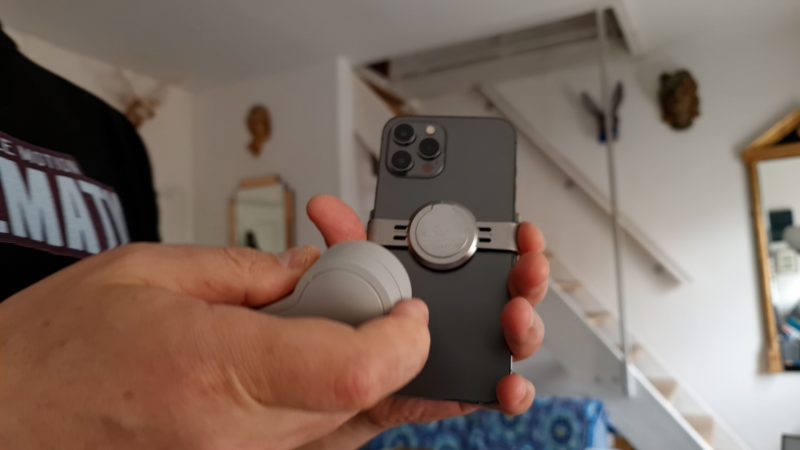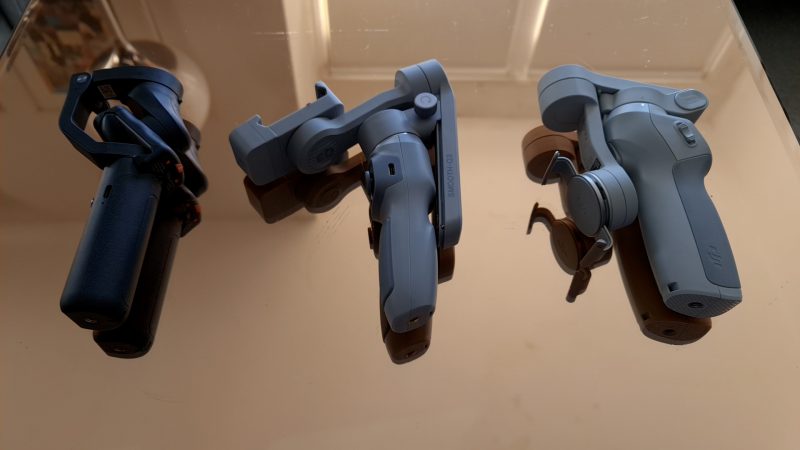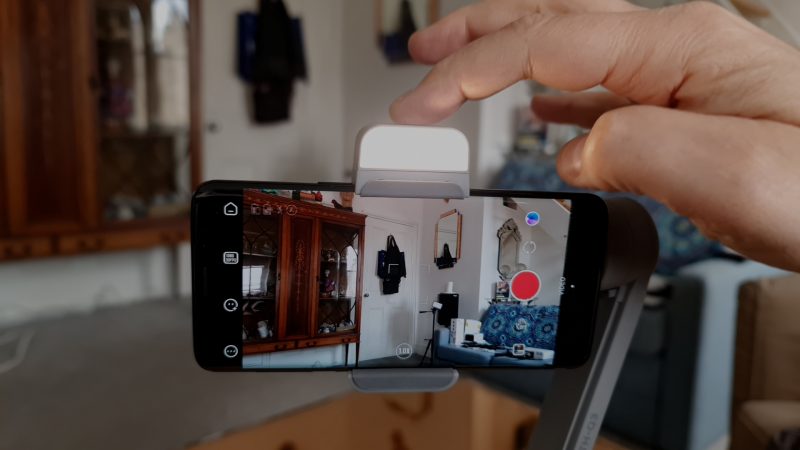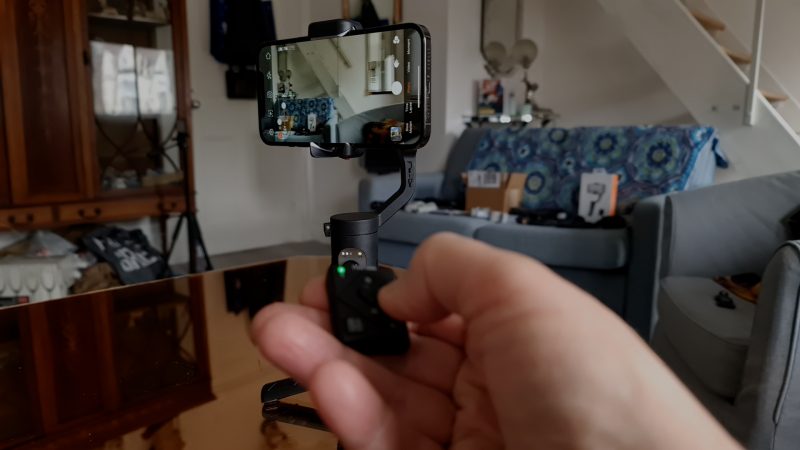DJI OM 4 vs Zhiyun Smooth Q3 vs Hohem iSteady X2
In this article, I’m going to look at 3 lightweight, compact smartphone gimbals: the DJI OM 4, the Zhiyun Smooth Q3 and the Hohem iSteady X2.
If you’re thinking about buying a small gimbal, you might be wondering which one of these is the best for you. So, I’m going to try them out, side by side, and see how they compare.
The DJI OM 4 came out last year, while the Smooth Q3 and iSteady X2 are recent releases. They are all updates on popular gimbals.
The System
All three can be broken down into a smaller size to make them easier to carry. The OM 4 and the iSteady X2 are foldable and haven’t really changed from their previous model. But the Smooth Q3 has a sliding gimbal arm instead.
As these gimbals are designed to be small and lightweight, let’s look at that first.
The Smallest
The iSteady X2 clearly folds up smaller than the other 2 and when folded I would say it’s a more convenient shape. Long and thin. The other 2 are going to take up a little more space.
The Smooth Q3 is the biggest when folded, but not by too much.
The Lightest
When I weighed them the OM 4 came out at 428 grams, the Smooth Q3 at 346 grams and the iSteady X2 at only 252 grams.
So when it comes to weight, that’s quite a big difference. The iSteady X2 is by far the lightest of the 3. I kept the OM 4 metal clamp on, even though it’s detachable, because I think that’s a fairer comparison. Even without the clamp, it still weighs almost 400 grams.
The question is, is it actually better to have less weight? Because weight in your hand can help you keep your hand steadier. Well, you always have the option to attach a small tripod to your gimbal to add extra weight.
Max Payload
How much can these gimbals carry? I have 2 of the biggest phones on the market – the iPhone 12 Pro Max and the Samsung Note20 Ultra – and I have found all 3 gimbals can handle these heavy phones.
The official max payload of the gimbals is 280 grams for the Smooth Q3 and iSteady X2. DJI says the OM 4 can carry 230 grams, plus or minus 60 grams. So I guess you could say it has a max payload of 290 grams.
Well, in practice, I have found the motors of all 3 gimbals are roughly equal. Only difference is that if the Hohem detects there’s too much weight, it quits and lights start flashing. With the other 2, they will give it a go even if you overload one side.
But, perhaps the Hohem strategy will preserve your gimbal’s motors in the long run.
Unique Features
While many features are shared by all 3 gimbals, each gimbal also has its own unique features.
DJI OM 4 : Magnetic Mount
The DJI OM 4 has a magnetic mounting system. When this was first released, there was a bit of a negative reaction to the idea of using a magnet to hold your smartphone to a gimbal. I can honestly say, both my heavy phones have been totally secure on this gimbal.
The magnetic mount allows you to quickly pull your phone from the gimbal. For filmmaking purposes, I love this. I like to mix my shots and not have every shot on the gimbal. With this I can quickly set up a hand held shot.

Also, you might like this if you quickly want to answer a call or check your phone for some reason.
Another feature unique to the DJI gimbal is a place to put counterweights. These ones are by Ulanzi and are pretty cheap. So if you want to add a case, lens and filter to your phone, it’s going to be too heavy on one side. But if you add counterweight, it balances out.
Zhiyun Smooth Q3 : Selfie Light
The Q3’s unique feature is it’s inbuilt selfie light. Just tap it on and off and switch between 3 different brightness levels. So for vlogging purposes, this could be very useful.
The other unique feature of this gimbal is the way it slides rather than folds.
Hohem iSteady X2 : Remote Control
The iSteady X2’s unique feature is the remote control. This little device gives you plenty to play with. Switch modes, pan left and right, zoom in and out, start record or take a picture, re-centre the gimbal, switch from front to back camera, switch from portrait to landscape and more.
You can even set it up to pull focus using the remote, which is pretty awesome. And this makes filming solo a lot easier.
The Apps
Each gimbal comes with an accompanying app. DJI offers you the Mimo app, Zhiyun the Cami app and Hohem the Hohem Pro app. So how does each app compare?
Some people use the gimbal with a different app, like the native camera app of your phone or a 3rd party app like FiLMiC Pro. Please bear that in mind when watching reviews of gimbals on YouTube, because you really get quite contrasting results.
Out of the 3 apps, in my opinion the DJI Mimo app is the most advanced, has the most features and delivers the best quality video.
I would say the Hohem app comes 2nd and the Zhiyun Cami app last. Thing about apps is they function differently on different devices, so other people might get different results to me.
In my experience, the Mimo app just works. On an iPhone there is a greater range of manual controls than the other 2 apps. If you want to control shutter speed for example. However, on Android, there are no manual controls at all.
The other 2 apps do have a couple of unique features you can’t find on the Mimo app. The Zhiyun Cami app allows you to set very slow shutter speeds, which is great for adding motion blur to hyperlapse shots.
Meanwhile, the Hohem Pro app allows you to switch to focus control instead of zoom – so you can use the zoom controller to perform a focus pull. As I never use zoom, being able to switch to focus is much more useful.
Aside from that, the Mimo and Cami apps have more features than the Hohem app. All 3 have a story mode style feature which allows you to create quick sequences from templates. Mimo and Cami allow you to edit within the app, including AI editing using templates. But the Hohem app does not.
All 3 apps allow motion timelapse, where you can program the camera to pan or tilt during the shot. Mimo and Cami have hyperlapse modes, Hohem does not. And on my Samsung devices, all the apps allowed me to shoot at 30fps only.
The Footage
I tested each gimbal, with 2 big phones and 1 small phone. So that’s 3 gimbals and 3 phones. For each combination I tested using the accompanying app and with the phone’s native app.
I found the best footage came from the iPhone + DJI OM 4 combination and was the most reliable when it came to frame rates. In general, the native apps of each phone performed better than the gimbal apps. The colour was more vibrant, with greater dynamic range and more reliable frame rates captured.
Of the apps, the DJI Mimo app was the most reliable. When set to 60fps and 4K resolution, both the Hohem and Zhiyun apps dropped frames. This leads to juddering movement when you come to edit or slow the footage for slow motion purposes.
BUY Zhiyun Smooth Q3 on Amazon
Smartphone Video – Beginner to Advanced
If you want to know more about smartphone filmmaking, my book Smartphone Videography – Beginners to Advanced is now available to download for members on Patreon. The book is 170 pages long and covers essential smartphone filmmaking topics:
Things like how to get the perfect exposure, when to use manual control, which codecs to use, HDR, how to use frame rates, lenses, shot types, stabilisation and much more. There’s also my Exploring the Film Look Guide as well as Smartphone Colour Grading.
Members can also access all 5 episodes of our smartphone shot Silent Eye series, with accompanying screenplays and making of podcasts. There’s other materials too and I will be adding more in the future.
If you want to join me there, follow this link.
Simon Horrocks
Simon Horrocks is a screenwriter & filmmaker. His debut feature THIRD CONTACT was shot on a consumer camcorder and premiered at the BFI IMAX in 2013. His shot-on-smartphones sci-fi series SILENT EYE featured on Amazon Prime. He now runs a popular Patreon page which offers online courses for beginners, customised tips and more: www.patreon.com/SilentEye





